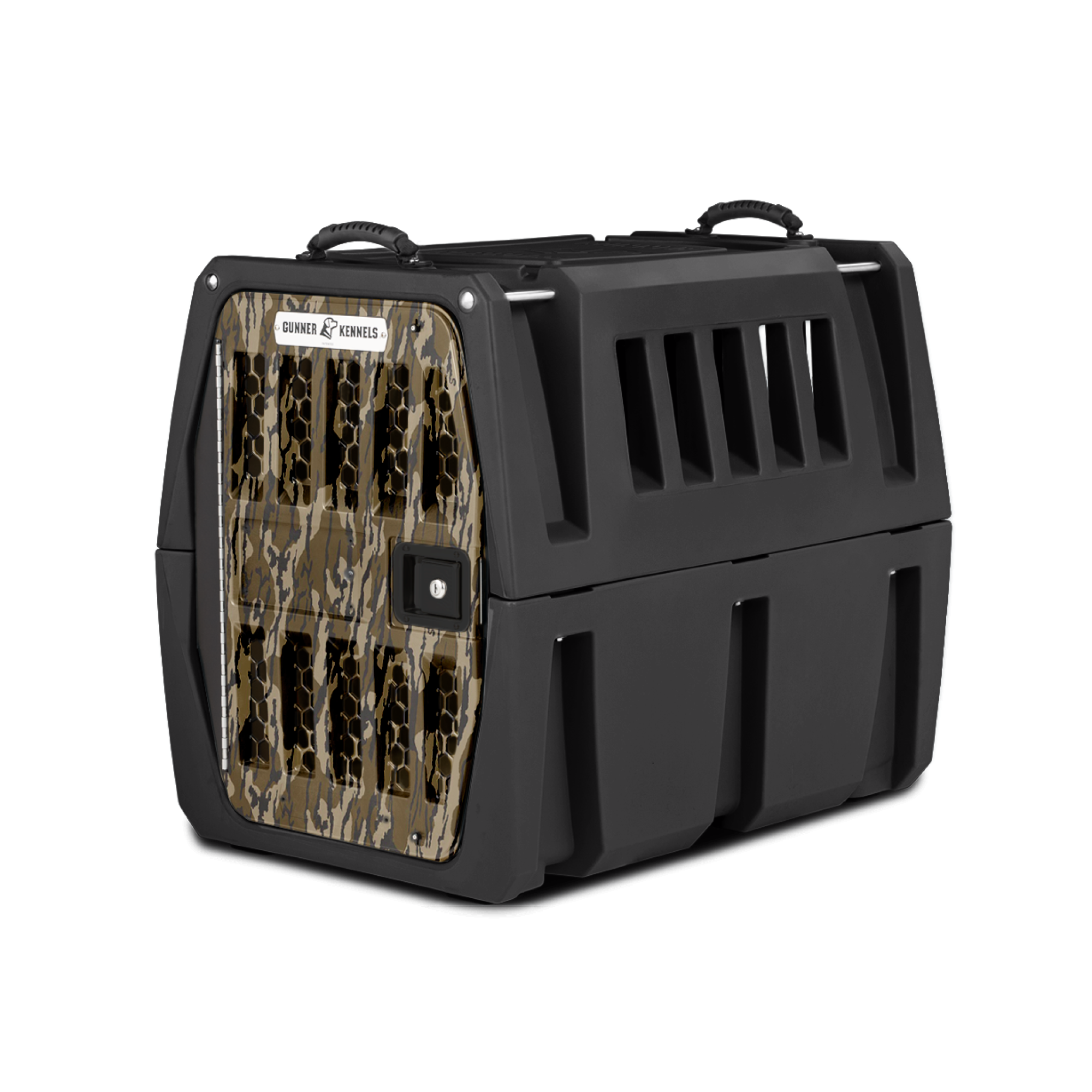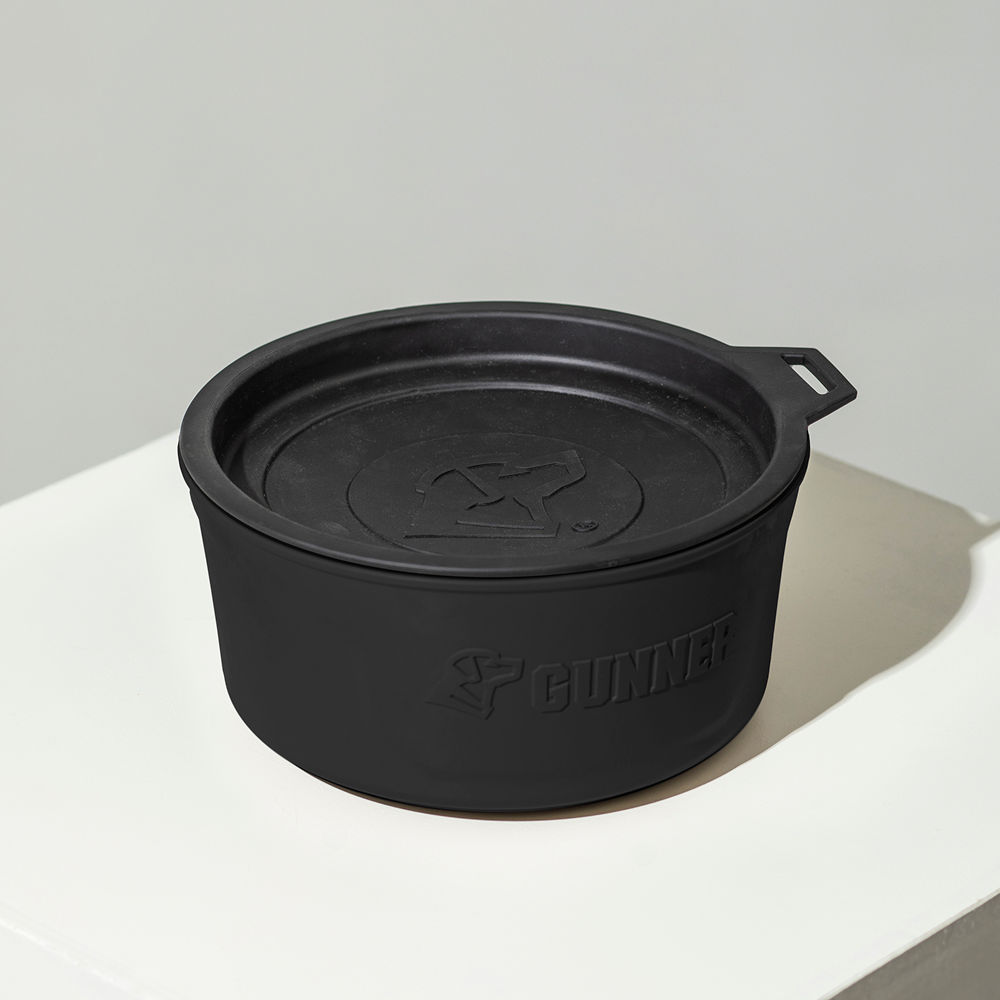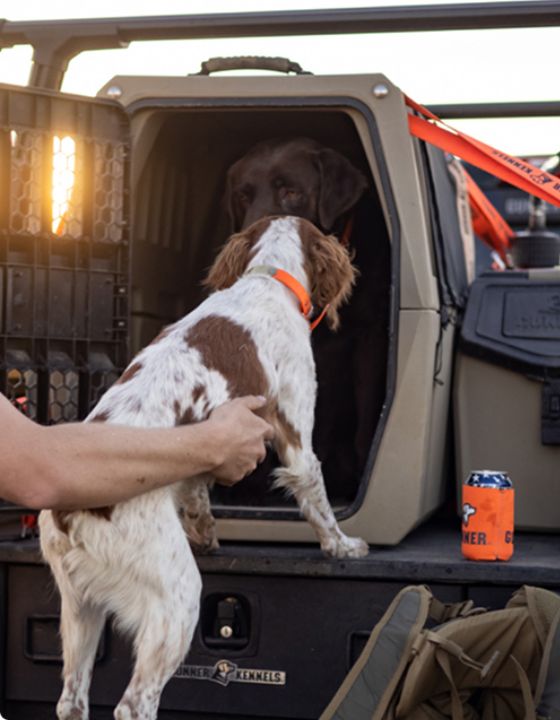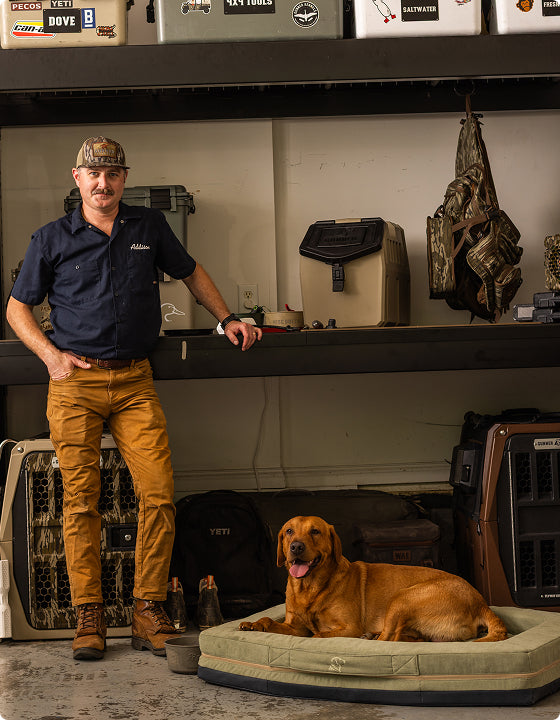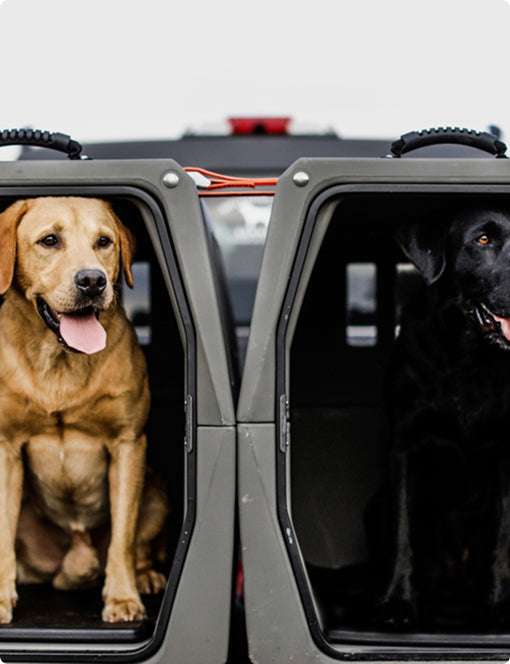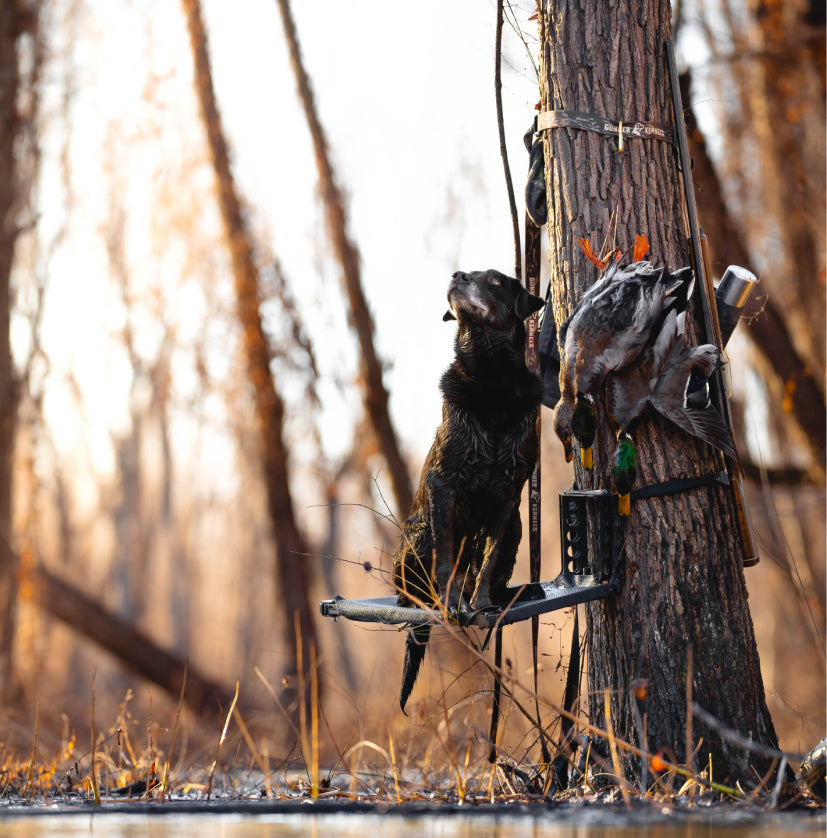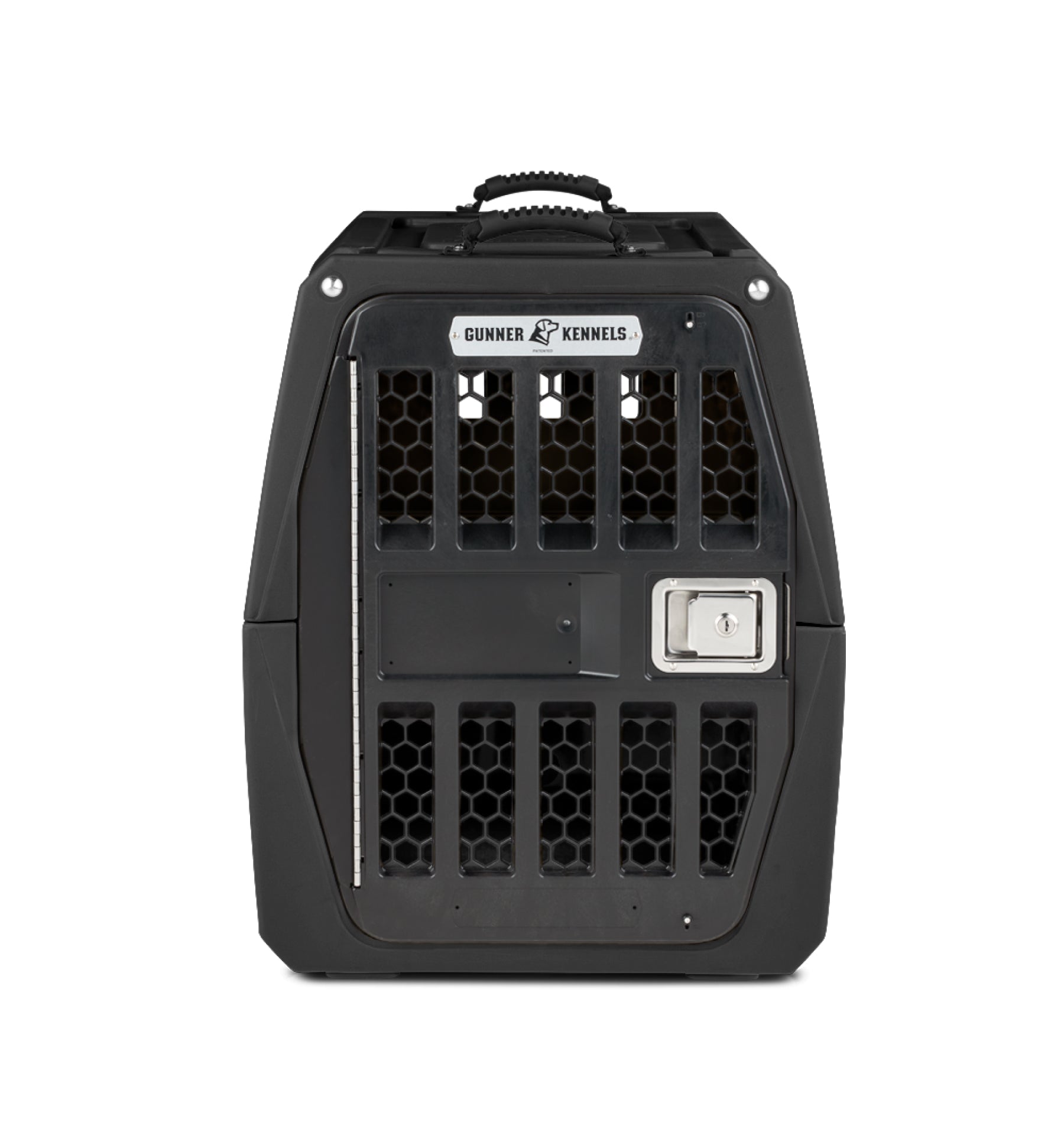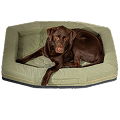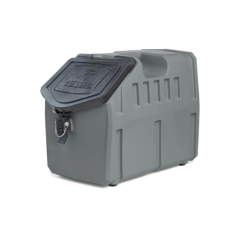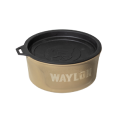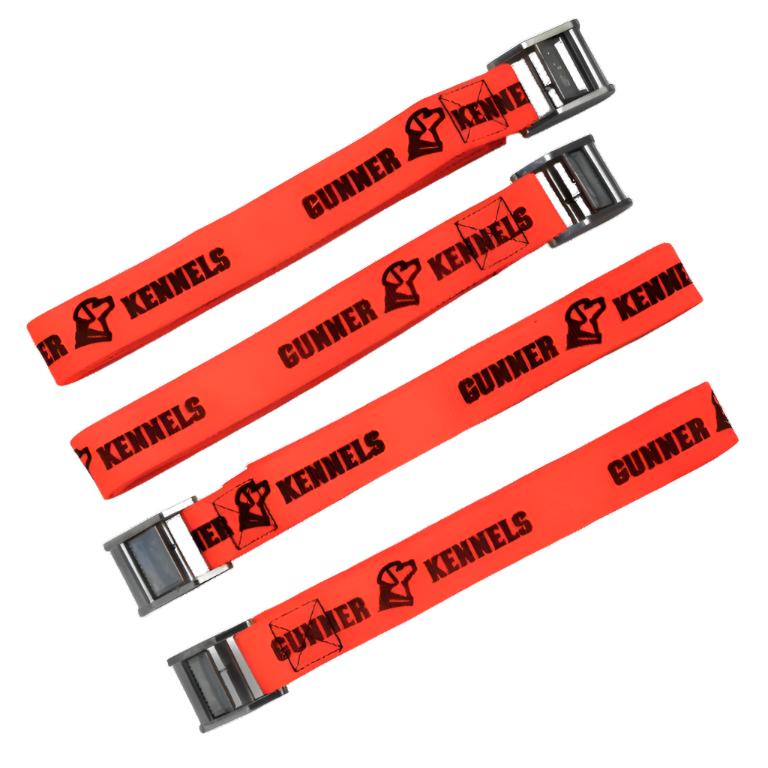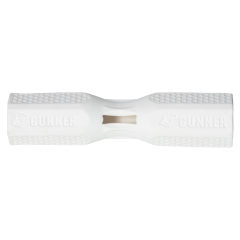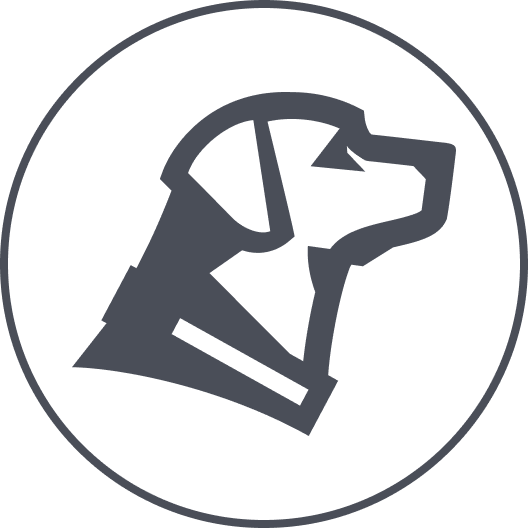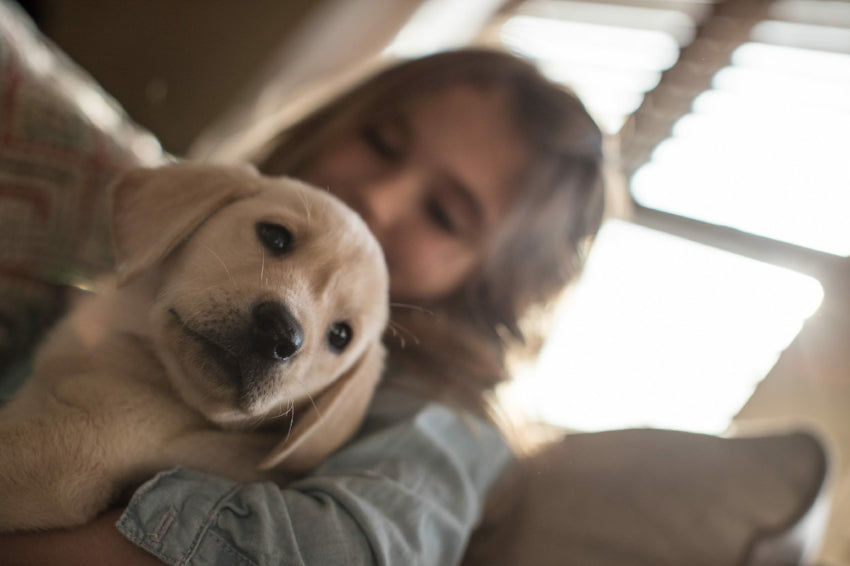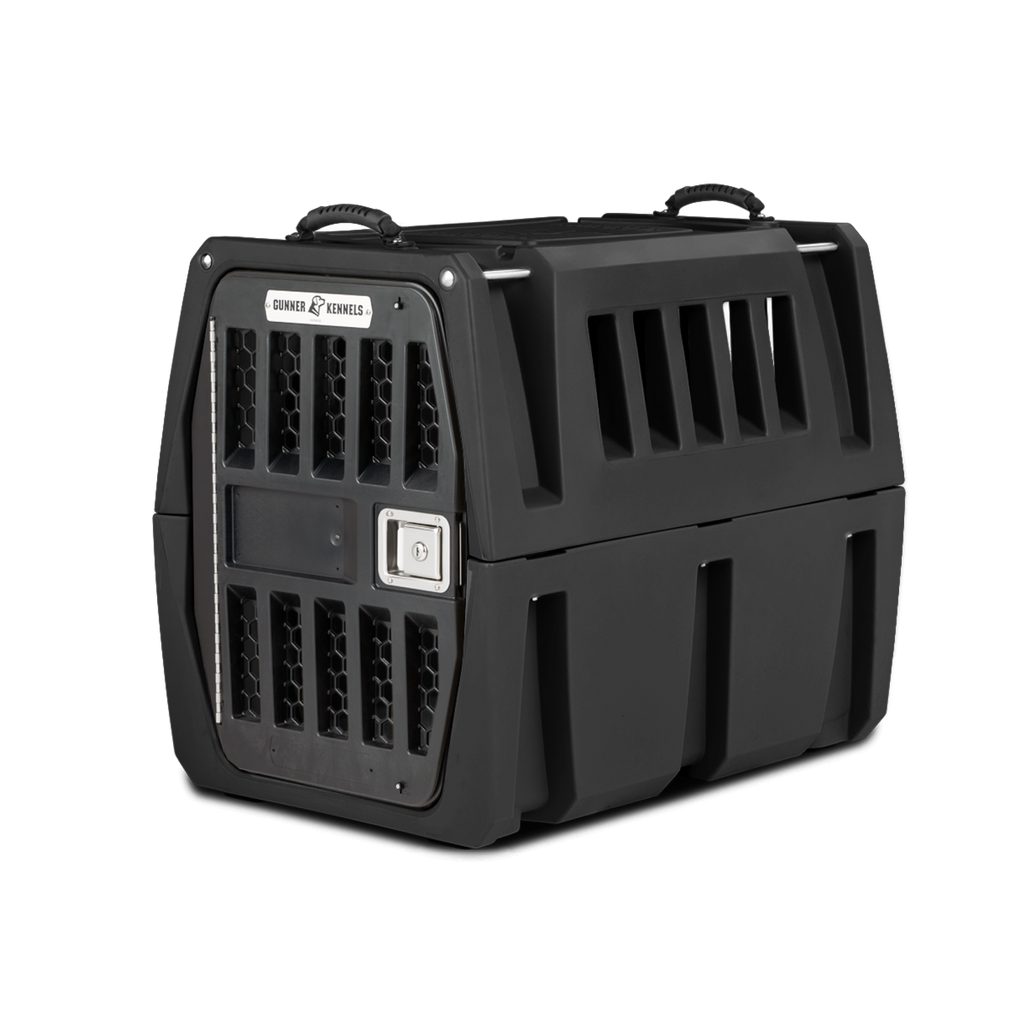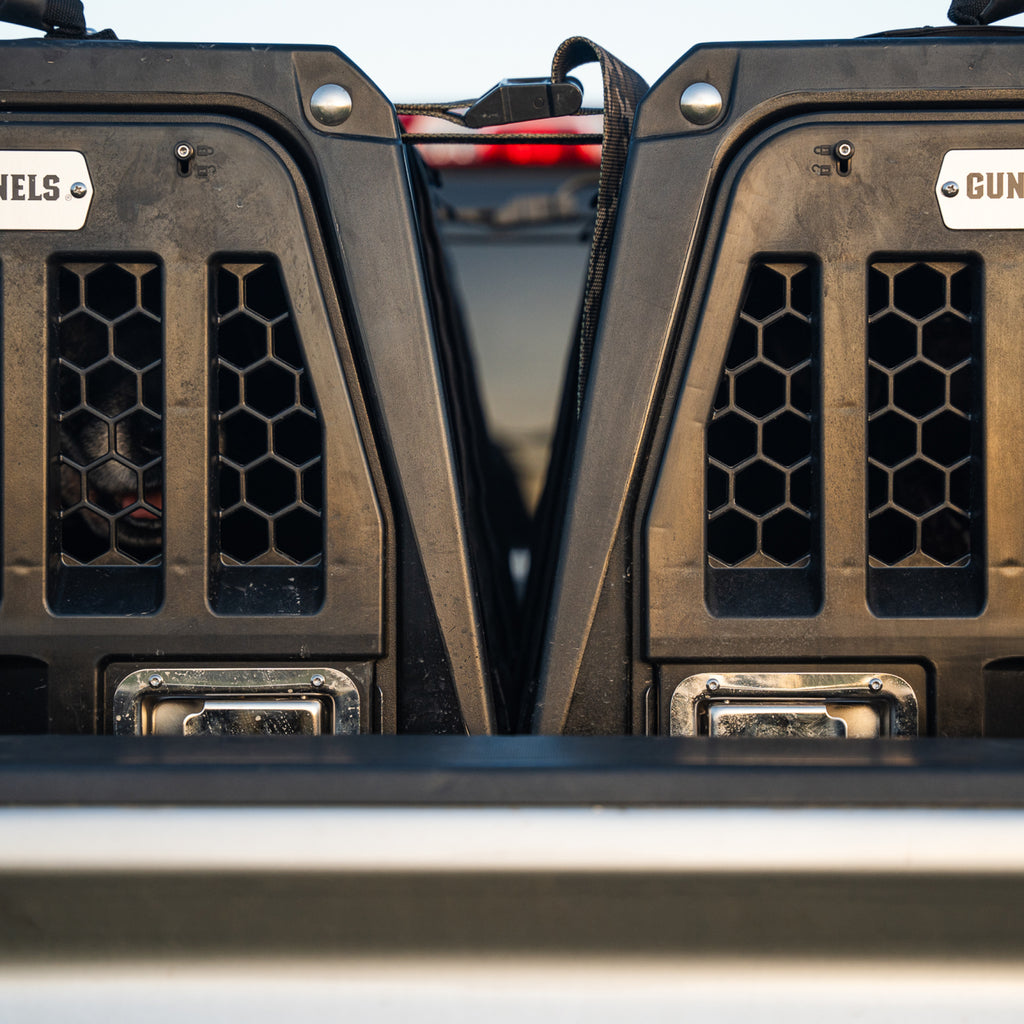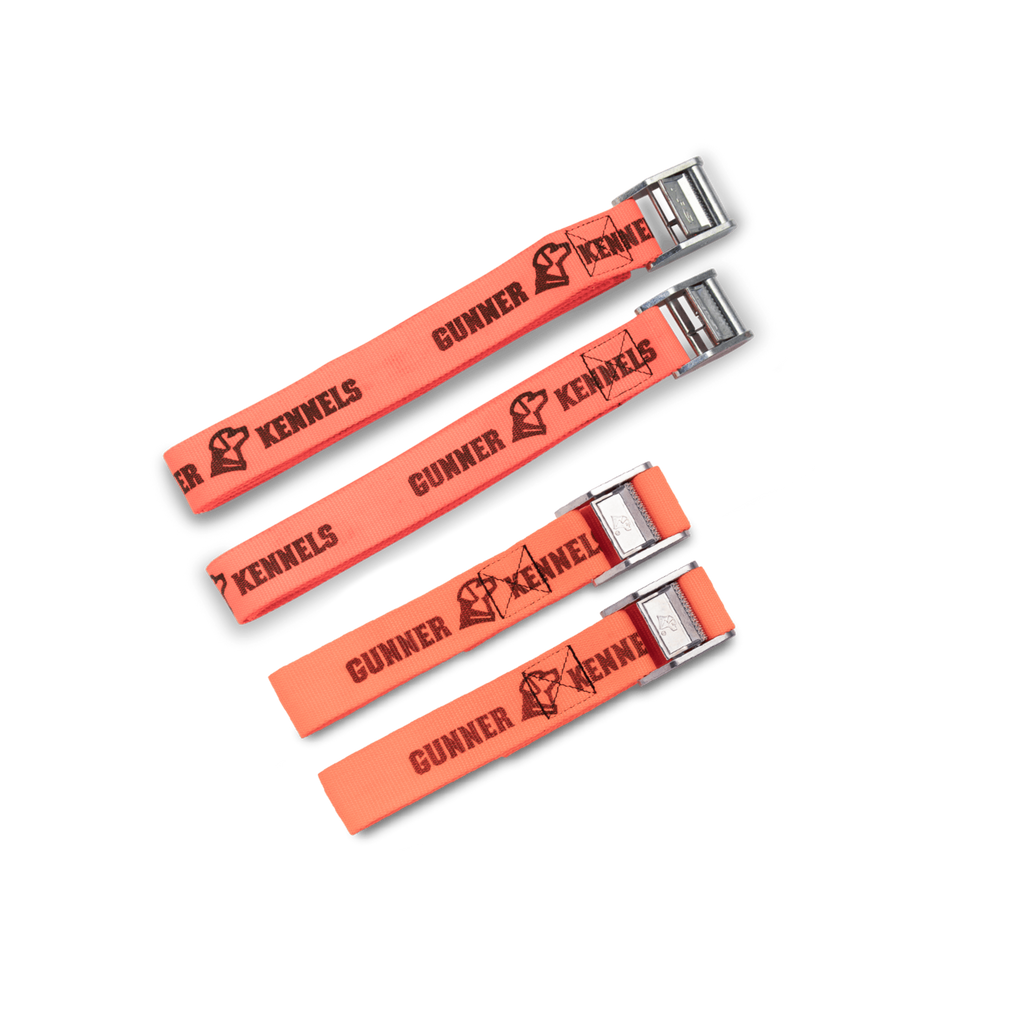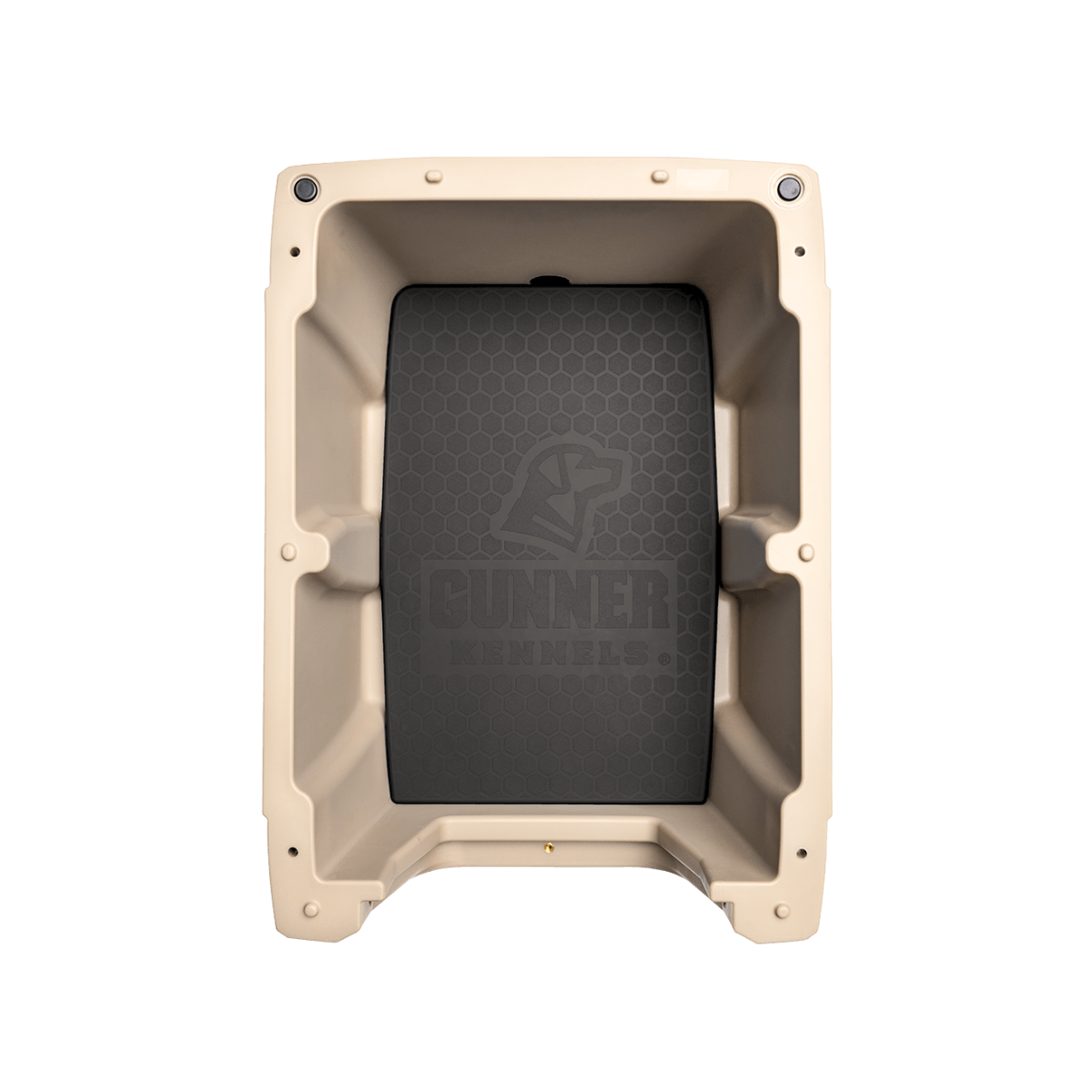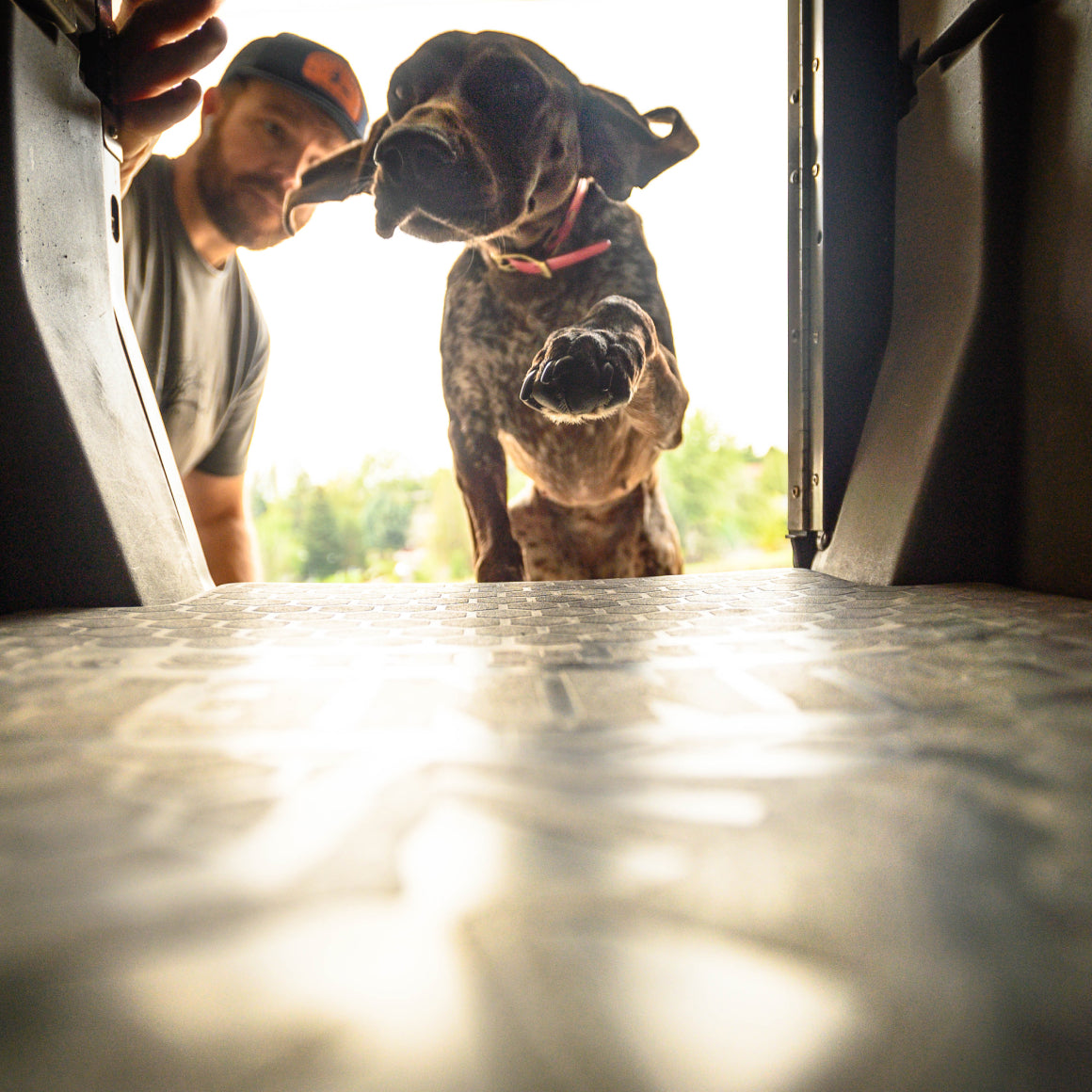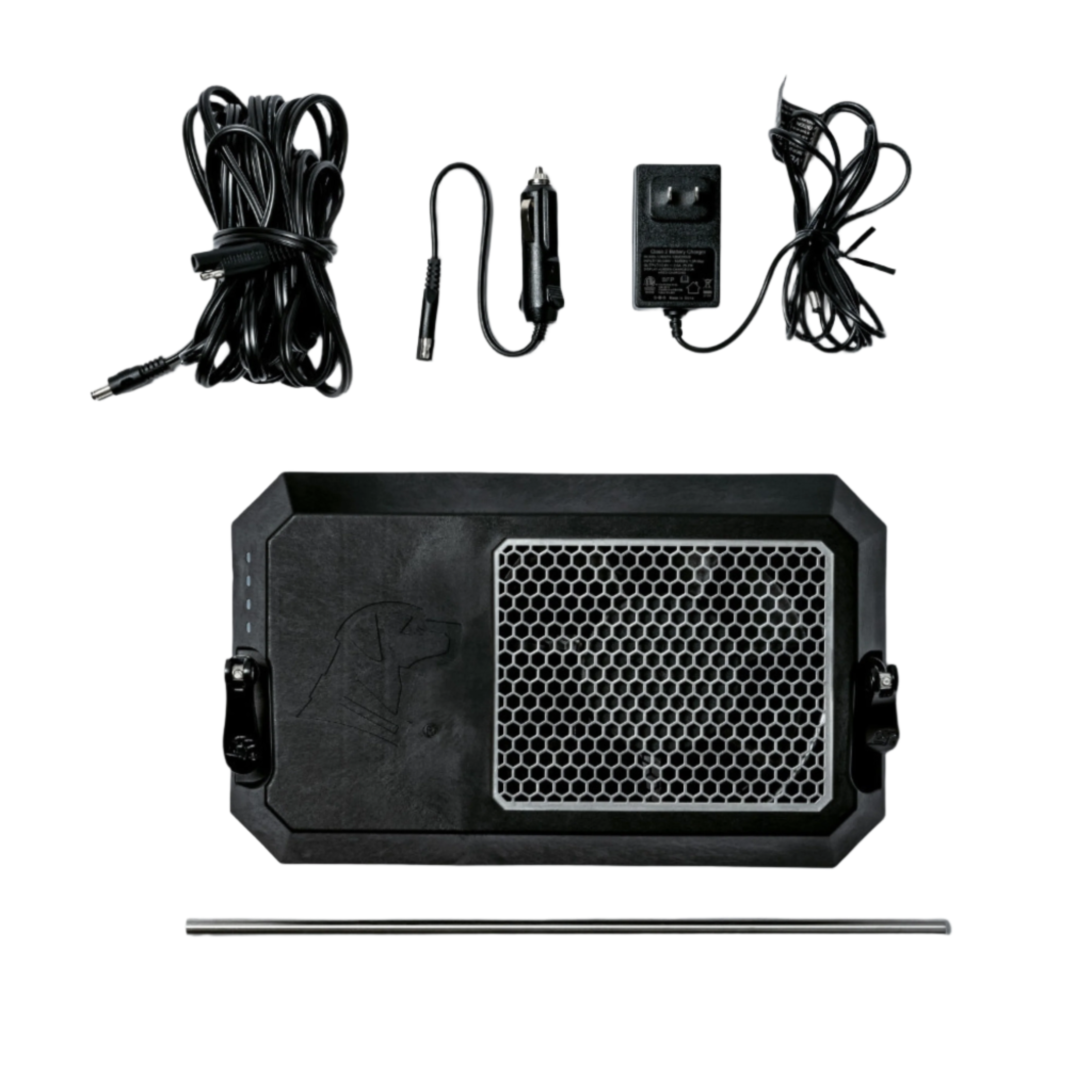Our friends at Cornerstone Gundog Academy recently launched a new wave of DIY training: 24/7 access to resources that’ll mold your pup into your most valuable tool in the field. Below, Co-Founder Barton Ramsey gives you an intro to crate training – plus some house-breaking tips:
1. Keep the dog in a quiet, safe place when you are not home, or not able to closely supervise the pup. A crate just large enough that he can lie down and stand fully erect is usually ideal for this. You are trying to help the dog develop control.
2. Scheduled food and water are very important for crate and house training. Give water whenever you can, but not in the crate, and not right before the dog is going to have to wait in the crate for some time. Modify this, of course, if the vet recommends it for your puppy or your situation. Feed at least twice a day, the best dog food you can get and be careful to keep the feedings to a routine schedule.
3. When you are able to watch the pup, keep the pup in the same room with you at all times. If you see your pup start to have an accident say, “No, outside.” at the very same time you scoop up the puppy and run outside. For a dog, you cannot carry, use a leash. No punishment, EVER. That does not work for house training, and you can cause major complications.
4. When you are outside in the right place for the pup to relieve, use a phrase such as “Go potty” as the puppy exhibits behavior that indicates they are about to relieve. This is only used at the time and the place where you want a pup to do it now. Never say it before you take the puppy outside. Only use the word “outside” in the house.
5. When pup relieves outside, praise generously. Good Boy or Girl in a pleasant tone along with a nice pat on the head or rubbing under the neck or behind ears will do wonders. If the pup likes to play outside, allow a little playtime after pup relieves itself. If your puppy wants to get right back inside, reward the pup by going right back inside.
6. When you do this process over again for several days you will find it will only take a few weeks to help your puppy develop enough control to be crate trained. This is conditioning the pup to go outside. This also sets up the process of house training as an extension of the crate training process.
A Couple of Things to Consider for House Training…
7. With a puppy, they tendto see the house as very large. Relieving in the corner of a quiet room can seem to a young pup’s instincts to be far enough away from the pack. It can be helpful to expand your young pup’s freedom in the house slowly. Remember, any mistakes that you do not see and correct by taking the dog outside right then will confuse your dog, and make house training take longer.
8. One thing that often confuses people is that the dog can hold it for 8 hours during the night or when they are away at work. That makes them think 8 hours is reasonable to ask of the dog at other times, too. However, during sleep, the body quiets the bladder and bowels, to allow this longer period of time. When you’re gone, the dog likely sleeps a lot, too, since dogs sleep about 14 hours a day. When the body has had to hold it like this, then it has to catch up. That makes going out every hour in the beginning even more important. Take your puppy out at least twice in the morning before you leave for work too.
9. It is important to remember that puppies are generally not mature enough for full bladder and bowel control until at least 16 weeks of age. Be patient and take this time to develop a great relationship with your puppy.
How To Handle Accidents…
10. Every time pup has an accident in the house, it confuses the puppy. Prevention is the best remedy. Therefore, you need to supervise or confine your pup 100% of the time. If you find an accident the puppy has had in the house that you did not see happen, that is more your mistake than the puppy’s fault. Obviously, you would never punish your dog for this.
11. Before using any other cleaning agents, treat the spot deeply and thoroughly with a bacterial enzyme odor eliminating product such as Nature’s Miracle (available at pet stores). Nothing else has been proven to really work at getting rid of the scent. If you don’t get rid of the scent, it will draw the dog’s instincts to use the spot again. Other cleaning products used before the bacterial enzyme product can cause it to be unable to work. They can literally kill the bacteria before they have a chance to deal with the odor.
For additional education on training your dog, check out Cornerstone Gundog Academy.
About Barton Ramsey
Barton Ramsey is the owner of Southern Oak Kennels, a labrador retriever kennel located in Northeast Mississippi, and co-founder of Cornerstone Gundog Academy. Barton’s love for the outdoors was developed later in life, but he has always had a passion for dogs and dog training. After being introduced to a few field-bred British labradors in 2009, Barton began down the path of dog training and breeding that would eventually lead to the inception of Southern Oak. His goal is to improve the standard of labrador retrievers through careful breeding selection focused on temperament, health, ability, and pedigree.

